Revitalise Your Hair with PRP Treatment
At FUE Clinics, PRP is often recommended as a complementary hair loss treatment to support overall hair health, especially in cases of androgenetic alopecia and early-stage hair thinning.
This treatment can be integrated with hair transplantation or other hair loss solutions, enhancing the scalp’s response to hair regrowth efforts.
-
 Over 25 Years Experience
Over 25 Years Experience
-
 Doctor Only Procedures
Doctor Only Procedures
-
 Perth’s Best Prices
Perth’s Best Prices
-
 Latest Techniques
Latest Techniques
Meet Dr. TJ
Dr. TJ graduated from the University of Queensland in 2009 and has over a decade of experience in Minor Surgery and Aesthetic Medicine. He has transplanted in excess of over 6 million hairs over 1500 hair transplant procedures in 7 years, making him one of the most experienced Hair Transplant Doctors in the country. He received his credentials from the London Hair Restoration Academy and has operated across Australia and New Zealand, including Perth, Sydney, Brisbane, Melbourne, and Auckland. Additionally, he has contributed to training many doctors in Australia and New Zealand.
Dr. TJ is an expert in Micro FUE extraction and DHI implantation. He is dedicated to achieving the best possible outcome for every patient, tailored to their specific needs and challenges.
Dr. TJ is also a published author in journals covering Oncology, Skin Medicine, and Radiology.
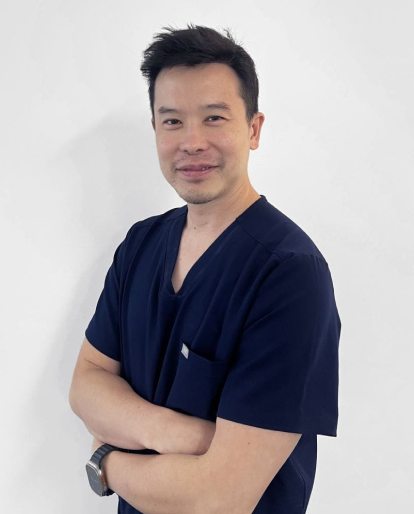
The PRP Hair Treatment Process at FUE Clinics
At FUE Clinics, we provide PRP therapy with a focus on patient comfort and clinical effectiveness. Each session is designed to be straightforward, with minimal discomfort and a brief recovery period:
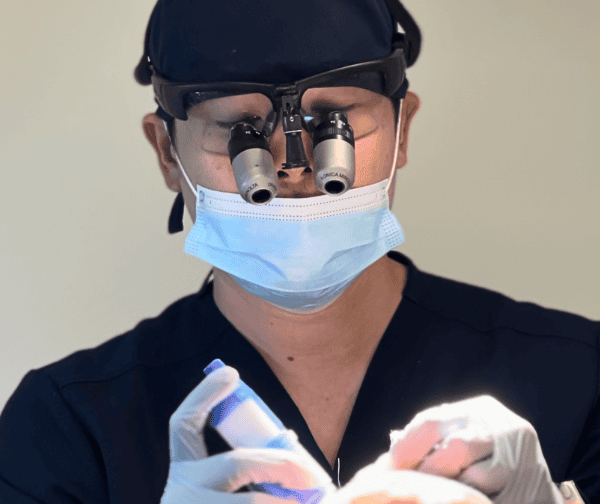
What Is Platelet Rich Plasma Hair Treatment?
PRP therapy utilises concentrated platelets, which contain growth factors that naturally stimulate hair follicles and support the hair growth cycle. The process begins with a simple blood draw, followed by careful centrifugation to isolate the PRP. This enriched plasma, now containing a high concentration of growth factors, is precisely injected into areas of the scalp where hair density has diminished, helping to stimulate hair follicles.
Mechanism of Action on Hair Follicles
PRP is derived from the patient’s own blood, which contains red blood cells, white blood cells, and platelets. Growth factors in PRP, such as platelet-derived growth factor (PDGF) and vascular endothelial growth factor (VEGF), play a key role in wound healing and tissue repair. When applied to the scalp, these growth factors help nourish hair follicles, enhance cell regeneration, and support the natural hair cycle.
For those dealing with conditions such as female pattern baldness or patchy hair loss, PRP therapy is especially valuable. The introduction of PRP has been shown to enhance follicle health and density. This has the potential to slow down hair loss and promoting a fuller, healthier scalp over time. While results may vary, some patients report thicker, more resilient hair following a series of PRP treatments.
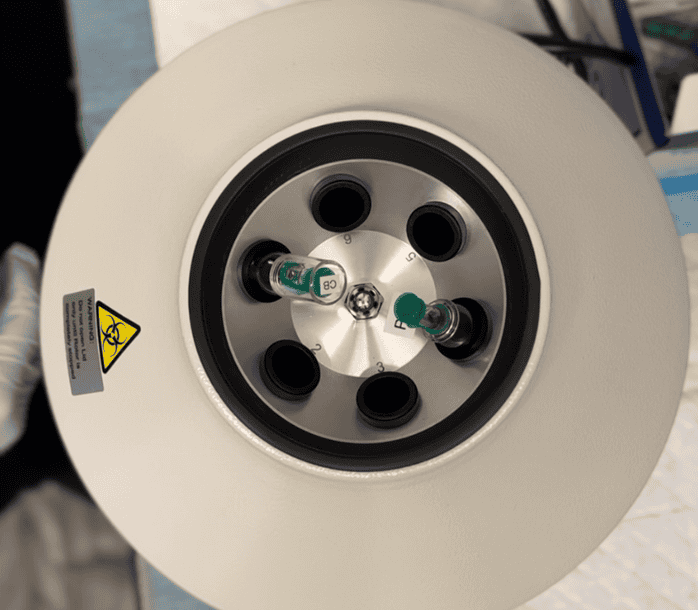
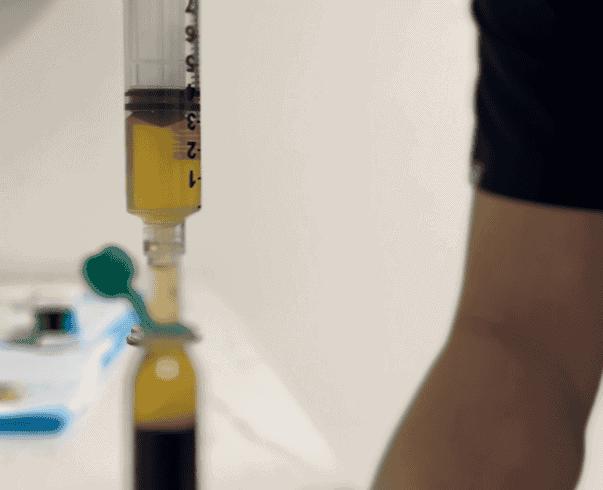
Safety and Potential Side Effects of PRP Therapy
However, like any medical treatment, there may be some minor side effects, including:
Scalp Tenderness: Patients may experience mild tenderness at the injection sites following the procedure.
Bruising and Swelling: Some individuals may experience minor bruising, which generally resolves within a few days.
Rare Risk of Infection: In rare cases, infection can occur if sterile procedures are not strictly followed.
Our clinical team at FUE Clinics ensures that every step of the PRP process is conducted with the highest standards of care and hygiene, minimising potential side effects and prioritising patient safety.
Maintaining Hair Growth with PRP
Typically, patients start with an initial series of sessions spaced about one month apart. This is followed by periodic follow-up sessions every three to six months, depending on individual response and hair growth progression. Consistent treatments can help maintain hair density, providing an effective treatment option to slow further hair loss and improve overall hair health.
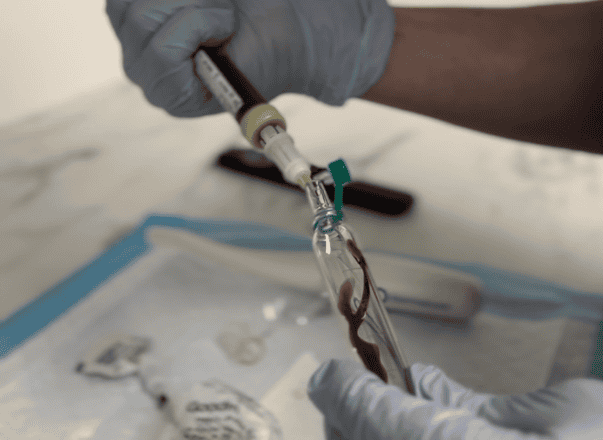
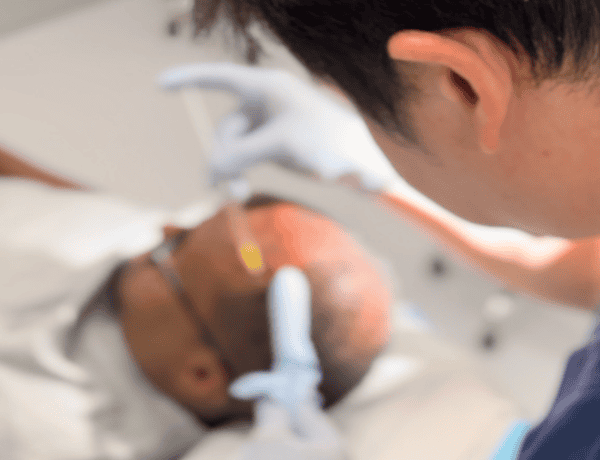
Get In Touch For A Treatment Plan
If PRP therapy interests you, we invite you to book a consultation at our Perth clinic. Our experienced team will assess your condition and recommend a personalised treatment plan for your hair restoration journey.
More Information On PRP
Our PRP service has many different aspects to consider:
Benefits of PRP Hair Treatment
PRP therapy offers a natural, low-risk option for hair loss. Since it uses the patient’s own blood, it eliminates concerns of allergic reactions or cross-contamination. As a non-surgical treatment, PRP also involves minimal downtime, allowing patients to resume normal activities shortly after each session. PRP hair loss treatments have been shown to be effective in promoting hair growth and improving hair density.
In addition to its safety profile, PRP offers the following benefits:
Enhanced Follicle Health: PRP can help rejuvenate hair follicles, promoting the growth of healthier, stronger hair and supporting long-term hair density.
Thicker Hair Shaft: With regular sessions, PRP therapy has the potential to strengthen the hair shaft, improving resilience and reducing instances of hair breakage.
Customised, Patient-Centred Care: At FUE Clinics, we adapt PRP treatments to each patient’s specific needs, monitoring progress and adjusting the approach as required.
PRP hair treatment is particularly suited for those experiencing early signs of hair loss, individuals with androgenetic alopecia, and those seeking to enhance the outcomes of other hair restoration methods, such as hair transplantation.
Ideal Candidates for PRP Hair Treatment
PRP hair treatment is an excellent option for individuals experiencing various types of hair loss, particularly in the early stages. Ideal candidates include men and women with androgenetic alopecia, commonly known as male or female pattern baldness. This treatment is also suitable for those experiencing hair loss due to hormonal imbalances, stress, or nutritional deficiencies. If you’ve tried other hair loss treatments without success, PRP might be the natural, non-surgical solution you’ve been looking for.
PRP treatment works best when there are existing hair follicles to stimulate, making it crucial to consult with a qualified medical professional to determine if this therapy is right for you. By assessing your specific condition, a specialist can tailor the treatment to maximise hair regrowth and overall hair health.
Cost and Efficacy
At FUE Clinics we offer a free consultation to help you to understand what is required and how much your procedure will cost. However, the standard cost of PRP hair treatment can vary widely depending on factors such as location, clinic, and the number of sessions required. On average, you can expect to pay between $500 and $2,500 per session. While this may seem like a significant investment, it’s important to consider the long-term benefits for your hair health.
Studies have demonstrated the efficacy of PRP hair treatment in promoting hair growth, increasing hair density, and reducing hair loss. For instance, a 2021 study found that PRP treatment increased hair density by 12.3% and hair thickness by 17.1% after just three sessions. Another study from 2019 reported significant improvements in hair growth and a reduction in hair shedding following PRP treatment. While individual results can vary, these findings highlight PRP as a safe and effective solution for hair loss.
Comparison to Other Hair Loss Treatments
PRP hair treatment stands out as a unique and innovative solution for hair loss. Unlike hair transplantation, PRP is non-surgical and non-invasive, requiring no incisions or lengthy recovery times. This treatment uses the patient’s own blood, making it a natural and safe option with minimal risk of allergic reactions or adverse effects.
PRP hair treatment also offers long-term results, with some patients experiencing hair growth for up to 12 months after treatment. Additionally, the minimal downtime associated with PRP allows patients to resume their daily activities immediately after each session. Compared to other hair loss treatments like minoxidil (Rogaine) and finasteride (Propecia), PRP has been shown to be more effective in promoting hair growth and reducing hair loss. This makes it a compelling choice for those seeking a natural and effective solution.
Indications and Considerations for PRP Therapy
PRP hair treatment is indicated for individuals experiencing hair loss due to various factors, including hormonal changes, genetic predispositions, or autoimmune conditions like alopecia areata. PRP is rich in white blood cells and growth factors, which help enhance the healing process and stimulate hair follicles. Patients dealing with female pattern hair loss, receding hairlines, or temporary hair shedding may also find PRP beneficial as part of a comprehensive hair restoration strategy. However, PRP is not suitable for all cases of hair loss, particularly in instances where the hair follicles have been permanently damaged due to scarring conditions.
During your initial consultation at FUE Clinics, our doctor-led team will conduct a thorough assessment, considering factors such as medical history, current health conditions, and family history. By identifying the underlying cause of hair loss, we ensure that PRP is an appropriate option for each individual.
PRP Hair Treatment FAQ
Fill out the form below for an obligation free quote!
Our team is here to assist you with any questions about hair restoration, the FUE process, or to schedule your consultation. We look forward to offering you the very best in hair restoration, from initial contact through to successful treatment outcomes.
